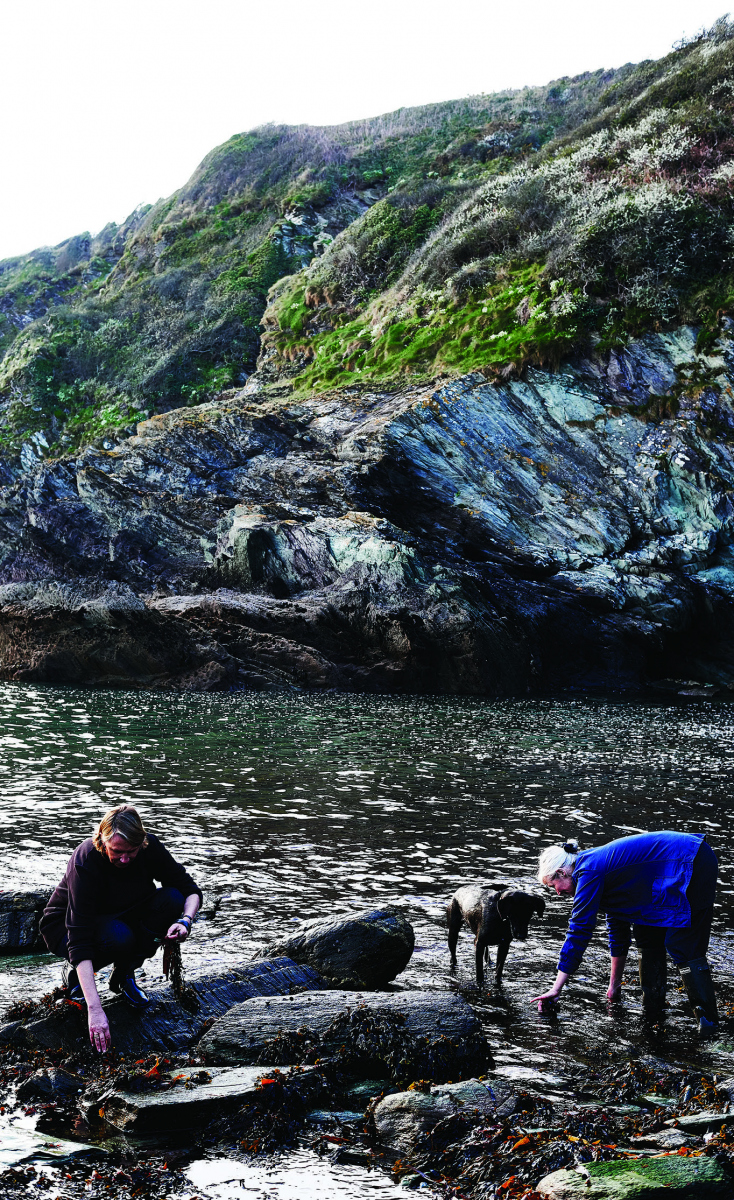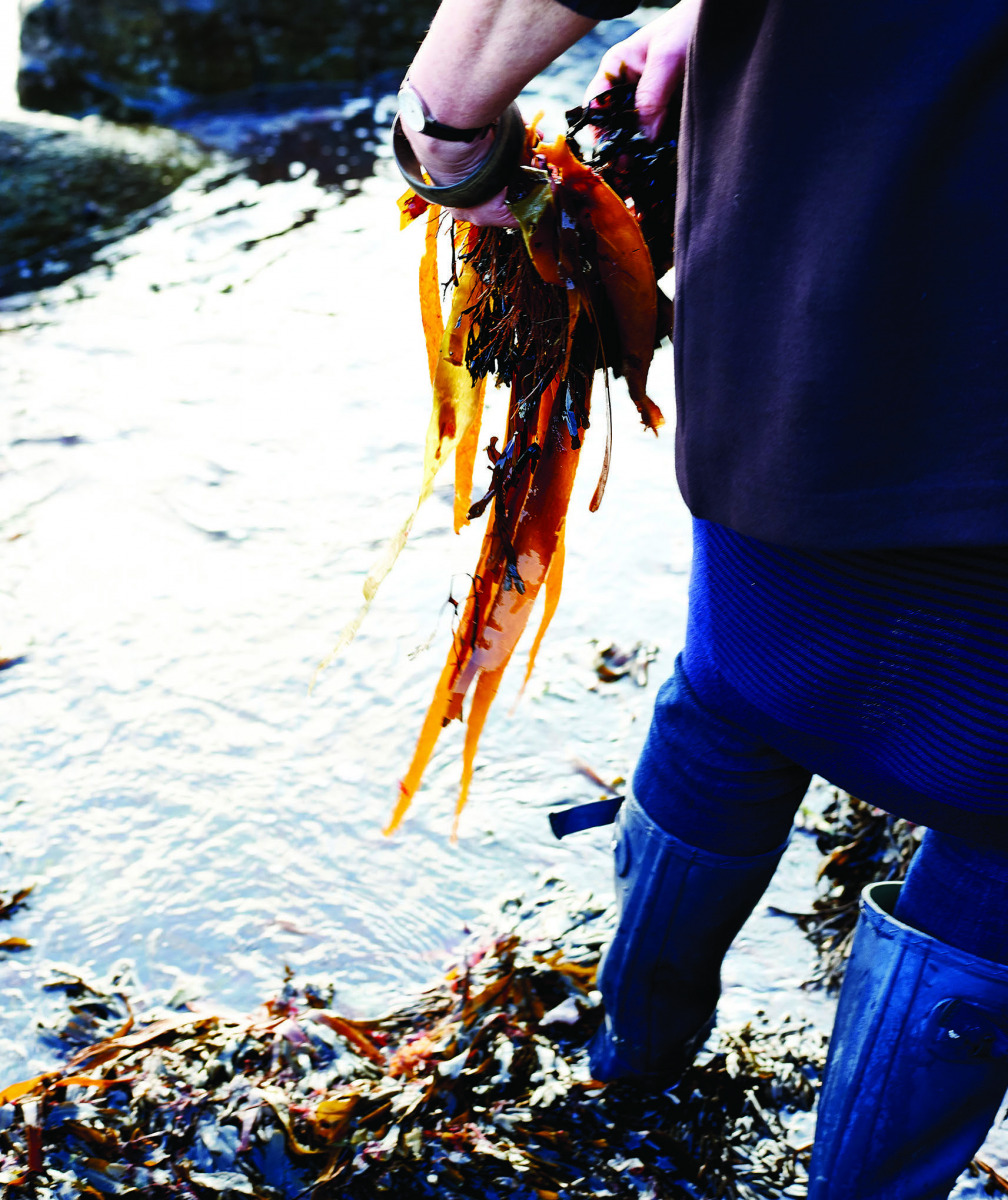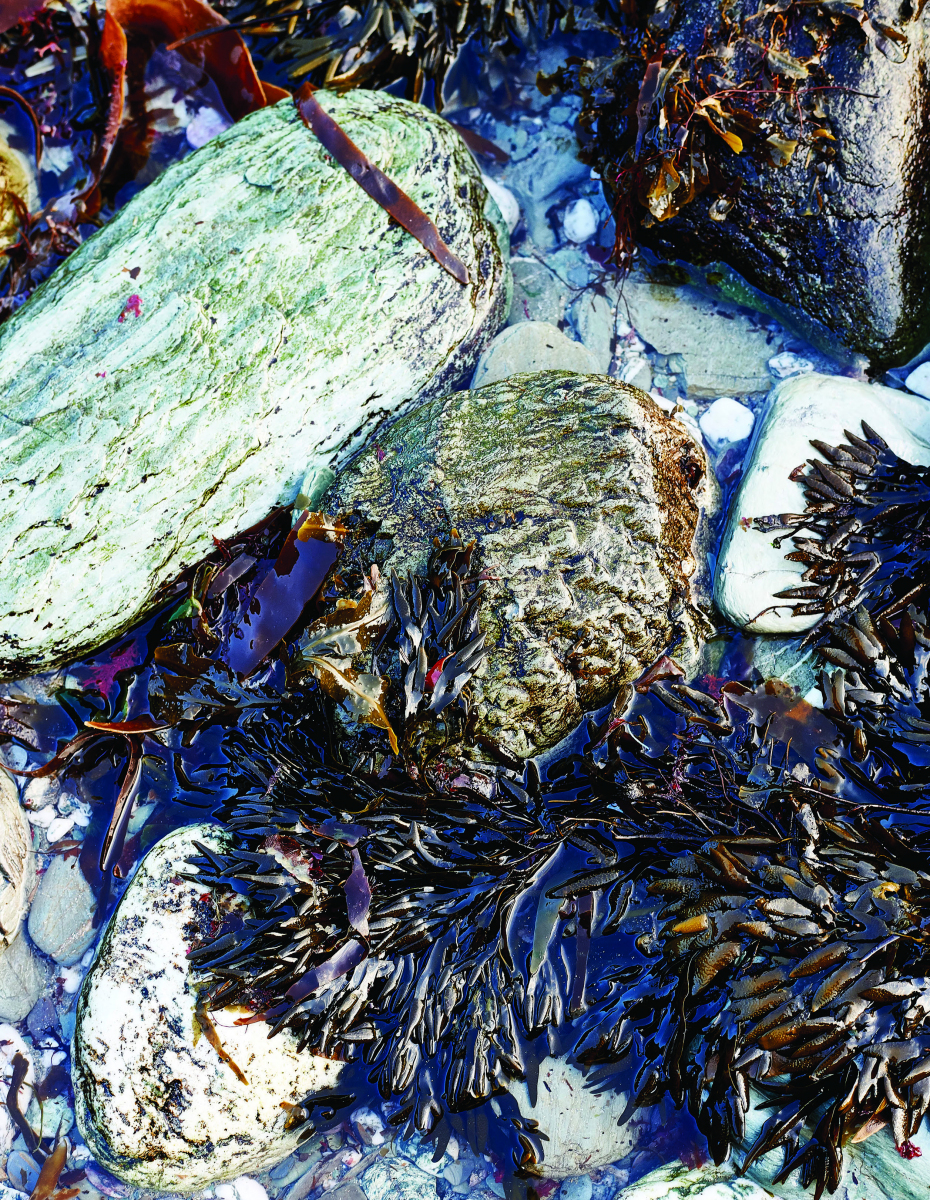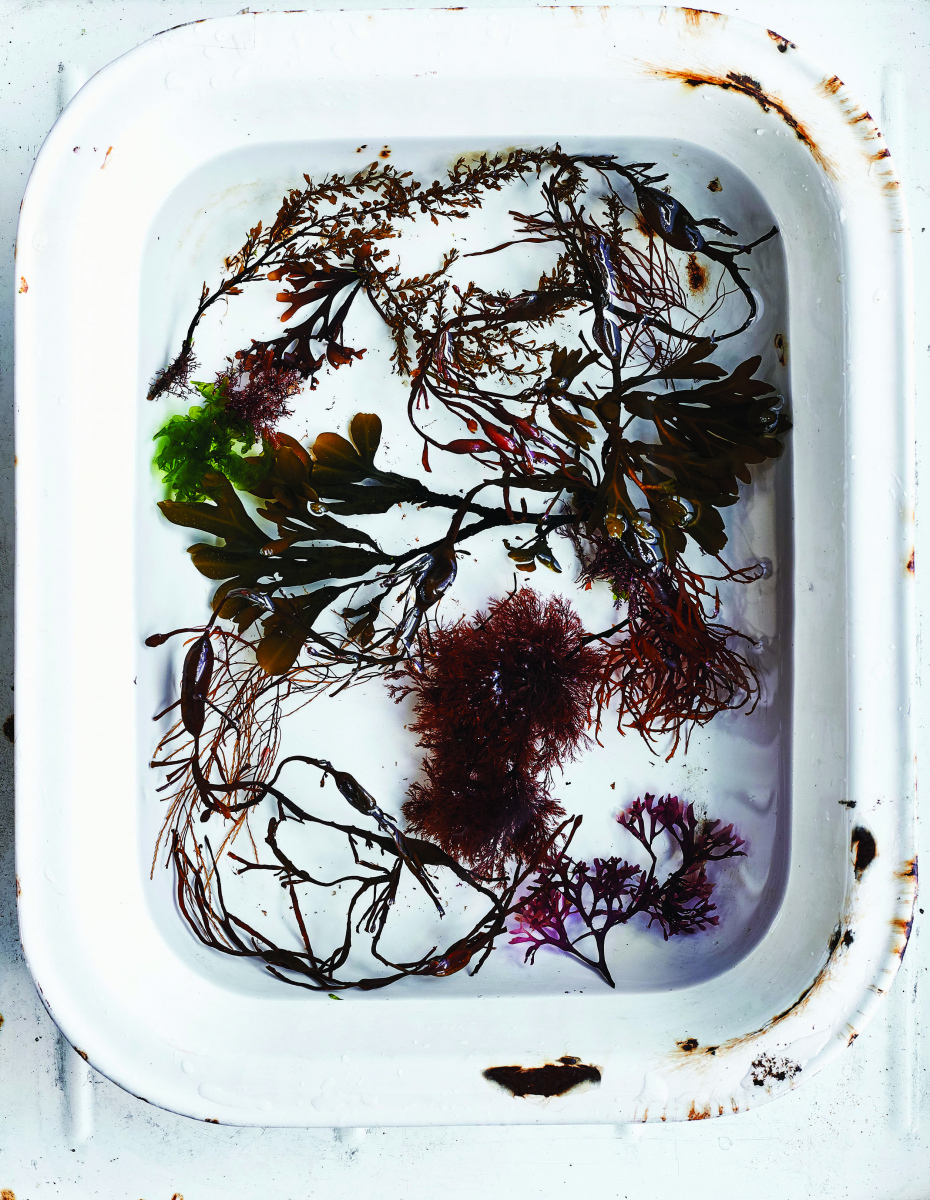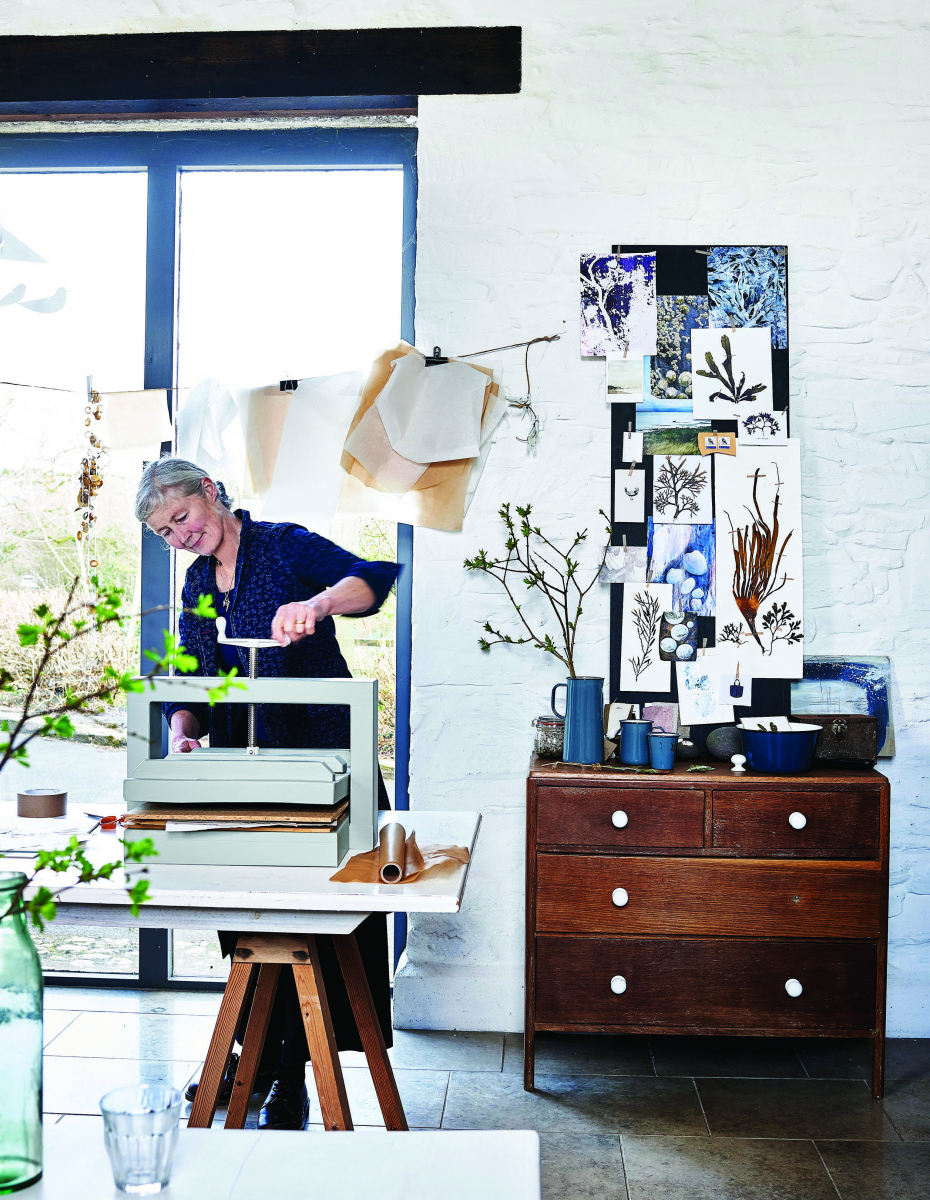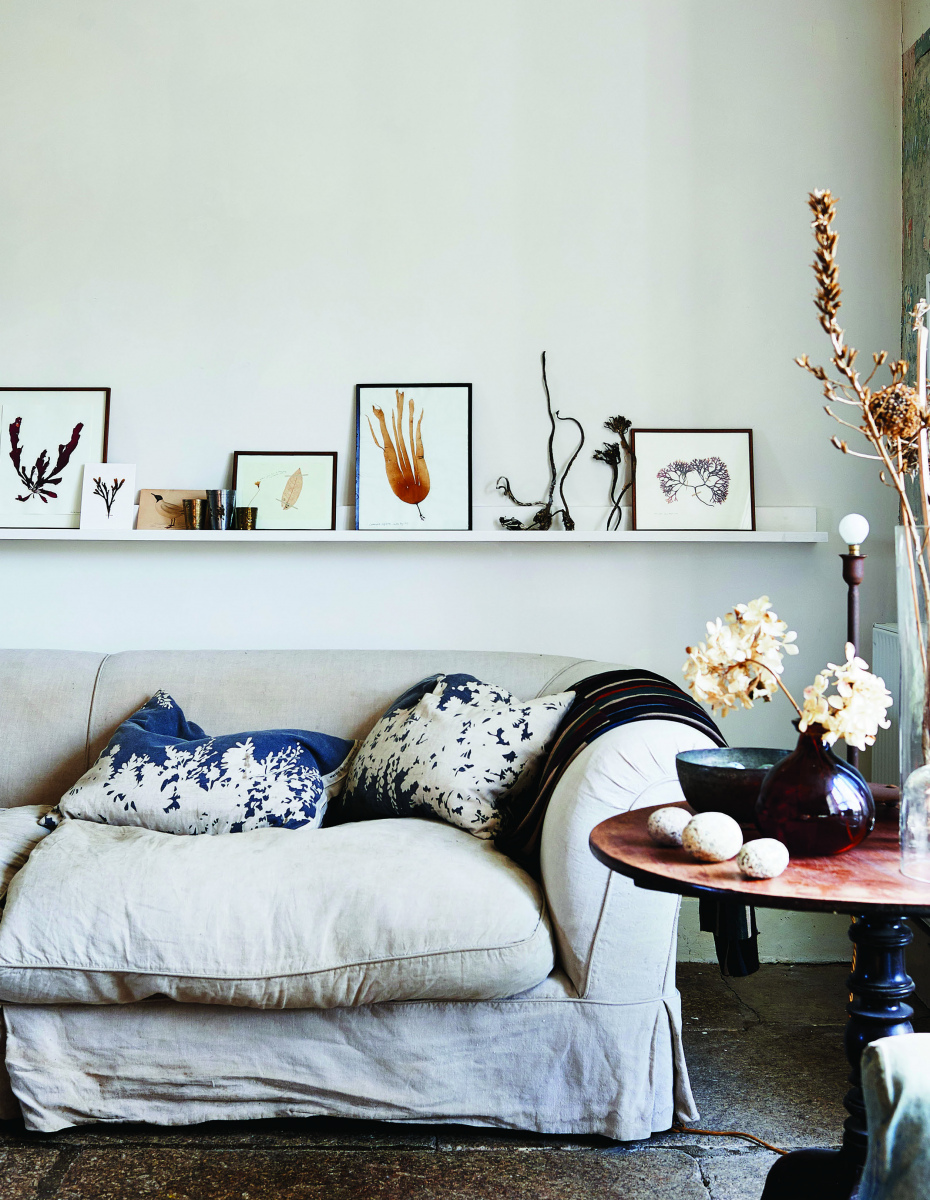MM: Although we didn’t meet until we were in our twenties, I think one of the reasons we’re such good friends is that our childhoods were very similar. Both our fathers were in the military but loved nature, and so wherever we were living in the world we both spent lots of time going for long walks, hunting slowworms and chasing butterflies.
JB: I was actually born in Hong Kong, and my parents were passionate about sailing, so while they raced we were left behind on some beach or other to amuse ourselves. I think a real love for the natural world is something that Melanie and I have always shared.
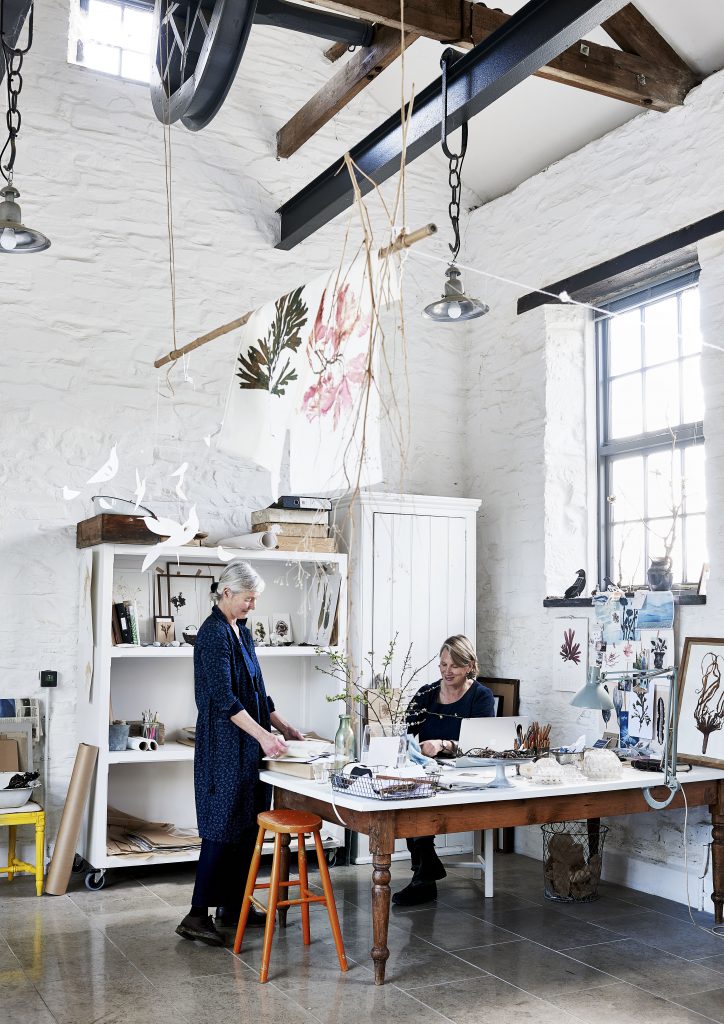
MM: That’s true, but that didn’t stop me from being lured by the bright lights when I was 18! Instead of going to art school I moved to London and took a job as a secretary on House & Garden magazine. JB: I started out as a nurse, but I really wanted to be involved in something more creative, so I decided to go to secretarial school with the idea of working my way into the design world.
JB: I started out as a nurse, but I really wanted to be involved in something more creative, so I decided to go to secretarial school with the idea of working my way into the design world.
MM: We had friends in common, and one day in 1980 we bumped into each other. It so happened that the editor of House & Garden was looking for a secretary, and I nagged Julia into applying for it.
JB: I eventually became a stylist and Homes Editor on various magazines, as did Melanie. Then I married a farmer, moved to Cornwall and had children, and it became impossible. I did miss the creative side of organising photo shoots, and so in 2006 I opened a shop in Fowey called BirdKids.
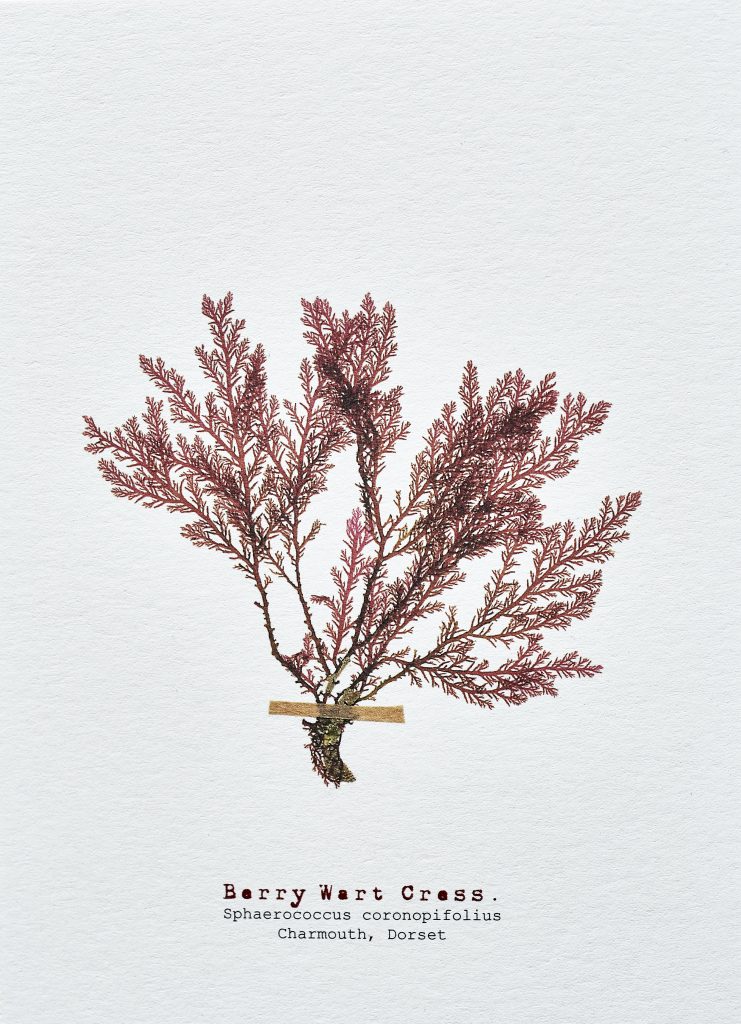
MM: By 2011, my sons had both grown up and left home and we were looking for new challenges. So when I stumbled upon (on the web) a fabulous old building in need of renovation on the Dorset coast in Lyme Regis—the timing seemed right to take the plunge and move out of London. It was a strange coincidence because years before I’d bought a folder of Victorian seaweed pressings that had been collected in Lyme, and I’d had some of them framed for our London house. Julia and I were talking about it one day; she had already done some seaweed pressing, so I had a go and we compared notes. I was always encouraging her because she has such a great eye and is so amazing, but she never did anything with it, so I said, OK come on, we’ve got to do something together! The first thing we did was a calendar, in 2016, under the name Molesworth & Bird. Then a magazine rang us up and said, are you doing limited edition prints? So we quickly said yes, of course we are! And that set us off.
I always like to think of us as modern day victorians, trawling the beaches in all weathers, dressed in full skirts and filling baskets with specimens!
JB: It’s really a very simple process. We each go down to our local beaches at low tide— that’s the best time to find lovely bits drifting about and then we wash them and float them onto paper and press them in pretty much the same way the Victorians did. What’s great about seaweed is that you have an endless supply of materials, new every day, and it costs you nothing. And if you can’t use something you’ve collected, it makes great compost! There are about 800 varieties of seaweed native to the British Isles, but the trick is always in finding something unusual and beautifully formed, with a good colour.
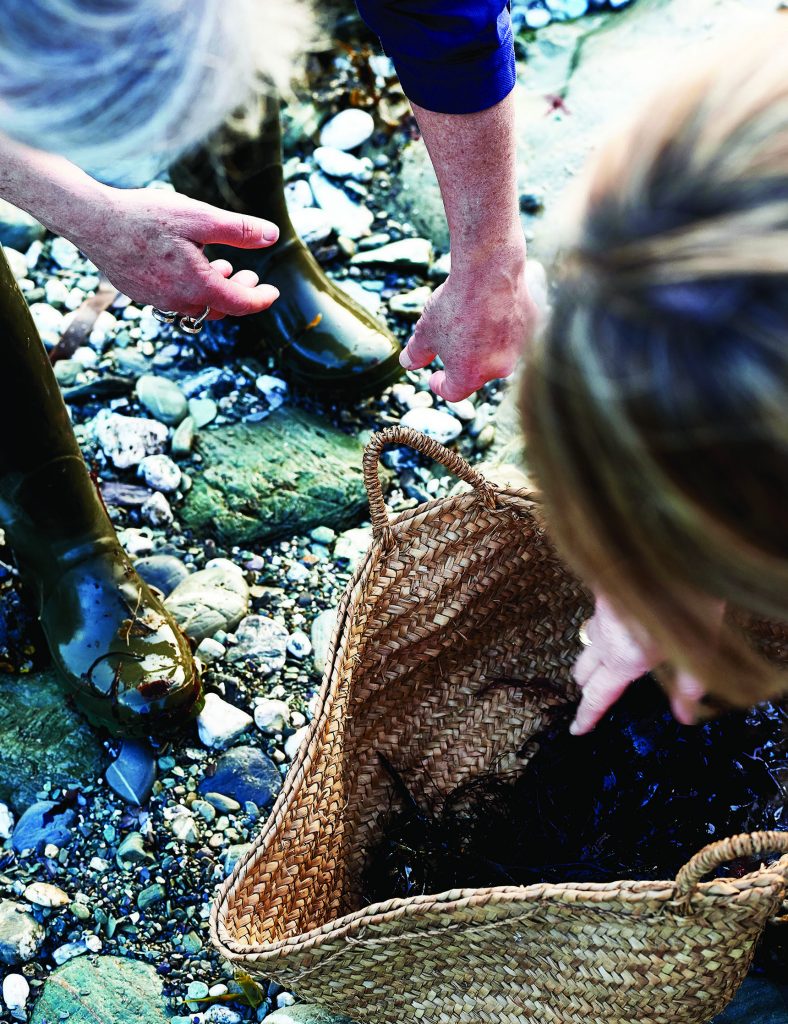
MM: We work both independently and together. Julia has a press and I have a press, then we get together and compare samples and decide what we’re going to do with them. We do have exhibitions every now and then where we sell the originals—we call it our “seaweed salon”—but the ones we really like are scanned and added to our collection of images. Recently we have opened a small shop at the ancient Town Mill in Lyme Regis— now renovated as a creative and artisan quarter—where I can work and sell our designs.
JB: Melanie goes to the beach pretty much every day because she’s right on the doorstep. I’m a little bit further away, but I’m passionate about sea swimming, which I try and do most days, and I always bring something home with me.
MM: It’s a very laid-back and organic working process between the two of us. We’re about two hours’ drive apart, and we meet in one place or the other, or often we meet in the middle, do some work and then have a nice lunch. What’s really lovely is that we’re old friends who never saw very much of each other, and this gives us a reason to get together every couple of weeks. I think you need that at this time of life. Also, suddenly you don’t have to spend your life taking someone to the dentist, or picking up kids from football—you’re free! People talk about retirement but you still have so much energy, and all these creative ideas that now you’ve got time to do.
JB: The admin is our least favourite part of the business, but we manage it between us. Our husbands are very supportive on that side of things too: Martin set up our website and is our IT guru, and my husband Graham often helps with boring things like going to the post office.
MM: After we did the first prints, we moved onto postcards and greeting cards, then cushions and tea towels. This year we’ve done some enamel mugs and jugs, which were etched with our images by a local company. Our latest idea is a swim dress, which was born directly from Julia needing something to throw on after her sea swims! We have everything made in England and really try to use local craftsmen and printers, but just like any business it can be challenging judging quantities to order; you never know quite how well things will sell.
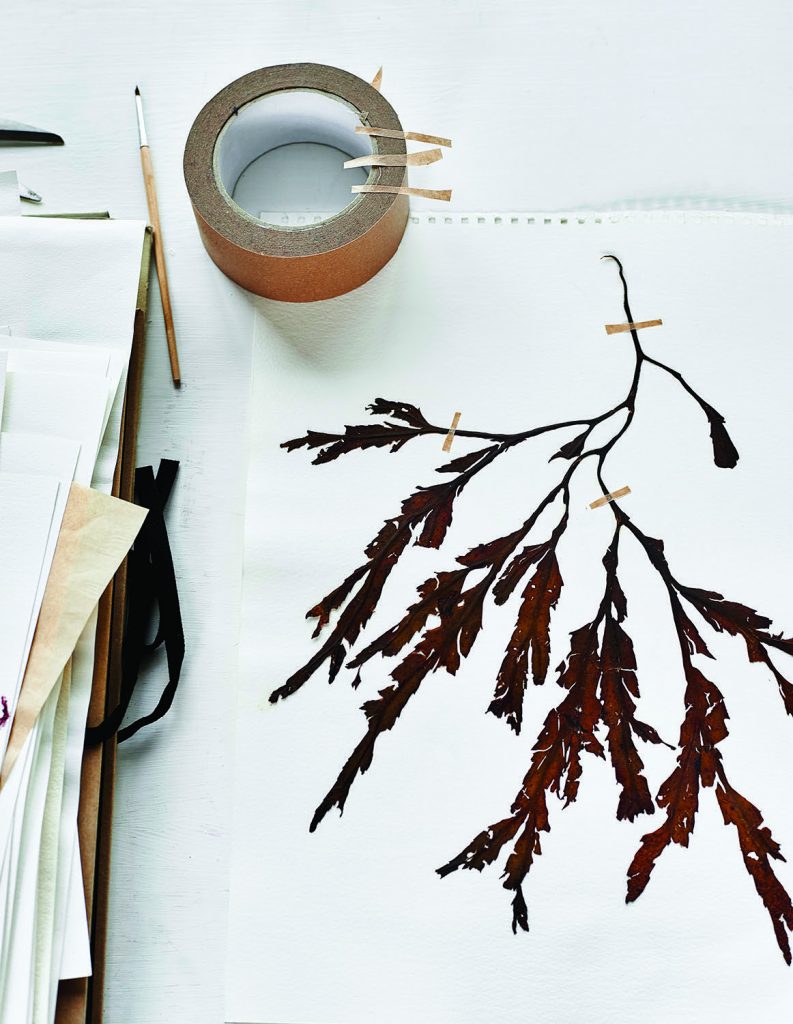
JB: It’s all about finding the courage to believe that it’s not just something that Melanie and I love, others will love it too. We’ve found that posting on Instagram is great for testing the market—we’re such a small operation that we can respond pretty quickly to demand through the website. We do sell some things through shops, mainly on the coast, but craft fairs work well for us: it’s fun to be a shopgirl for a couple of days and then think, phew, pack up and back to normal life. My studio is in a lovely old farm building a few miles from my home (where these photographs were taken), and we’ve recently opened it to visitors as it’s just off a main tourist road in Cornwall.
HAVE THERE BEEN ANY WOMEN IN YOUR LIFE THAT HAVE MADE A DIFFERENCE TO YOU AND WHAT YOU HAVE CHOSEN TO DO?
MM: My mother was a real fifties housewife—everything was always ‘spic and span’ (a skill I have definitely not inherited!) and I’m not sure she really approved of me going out to work and neglecting the household. However our home was a creative one; mother was always knitting, embroidering or sewing something colourful and encouraged us to do the same, so her influence I now realise cannot be denied. In my twenties, when I worked as an interiors photographic stylist for Conde Nast, I was surrounded by plenty of fabulous creative women. In this environment I felt encouraged by them to push boundaries, work with the best photographers and create lavish decorating stories. And of course during the lows there was always someone around to commiserate and help you pick yourself up when things went wrong.
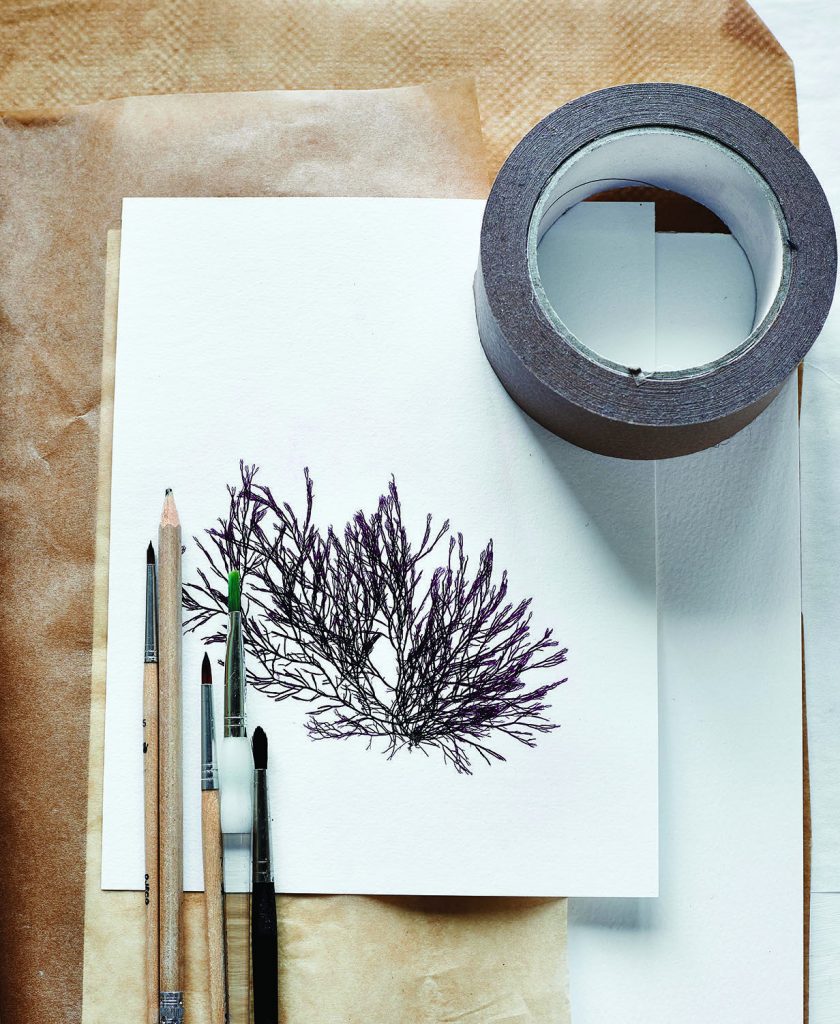
JB: My mother seems an obvious choice, but the older I am the more I realise that the pattern of my life is so closely modelled on how my mother chose to bring us up as a family—she was a true free spirit who refused to follow the conventions expected of an army officer’s wife! Instead we spent all our free time on boats, swimming and camping wherever we were in the world. Much of our food was home grown, foraged and always cooked from scratch by my mother; she also patiently sewed and knitted all our clothes. A love of nature and the outdoors is so deeply embedded in my psyche. I learnt some years ago that city living really doesn’t suit me!
HOW DO YOU THINK WOMEN CAN HELP EACH OTHER TO BE BOTH CREATIVE AND SUCCESSFUL IN WHAT THEY DO?
MM: I find I produce the best work when I’m supported by like-minded people. So my advice would be to find your tribe and work with positive folk you like who share your creative vision and sense of humour—life’s too short to battle away at things you don’t believe in. It works for me!
JB: Women are generally so naturally good at this—for me it is always about friendship, which means regularly meeting up and sharing time together with my female friends, usually in the form of a walk or a swim and a flask of something! Having those honest conversations about life and the ups and downs inspire happiness and ultimately confidence. I feel having confidence in oneself is the key to being creative and successful.
MM: I have to say it’s really good having someone else to do this with, for a second opinion and because it’s so much more fun. Also, you can’t be too lazy because you just think, I bet Julia’s working really hard…but then she’ll ring me up and say, oh sorry, I just went for a swim and I’ll say, that’s all right, I just went for a glass of wine with my friend! Of course it helps that we share a similar creative outlook—it’s great having someone to turn to whose opinion you really trust. We’re pretty good at motivating each other work-wise, but we’re also good at finding plenty of time out for socialising, sea-swimming and generally enjoying our coastal lives!
MM: Although we didn’t meet until we were in our twenties, I think one of the reasons we’re such good friends is that our childhoods were very similar. Both our fathers were in the military but loved nature, and so wherever we were living in the world we both spent lots of time going for long walks, hunting slowworms and chasing butterflies.
JB: I was actually born in Hong Kong, and my parents were passionate about sailing, so while they raced we were left behind on some beach or other to amuse ourselves. I think a real love for the natural world is something that Melanie and I have always shared.

MM: That’s true, but that didn’t stop me from being lured by the bright lights when I was 18! Instead of going to art school I moved to London and took a job as a secretary on House & Garden magazine. JB: I started out as a nurse, but I really wanted to be involved in something more creative, so I decided to go to secretarial school with the idea of working my way into the design world.
JB: I started out as a nurse, but I really wanted to be involved in something more creative, so I decided to go to secretarial school with the idea of working my way into the design world.
MM: We had friends in common, and one day in 1980 we bumped into each other. It so happened that the editor of House & Garden was looking for a secretary, and I nagged Julia into applying for it.
JB: I eventually became a stylist and Homes Editor on various magazines, as did Melanie. Then I married a farmer, moved to Cornwall and had children, and it became impossible. I did miss the creative side of organising photo shoots, and so in 2006 I opened a shop in Fowey called BirdKids.

MM: By 2011, my sons had both grown up and left home and we were looking for new challenges. So when I stumbled upon (on the web) a fabulous old building in need of renovation on the Dorset coast in Lyme Regis—the timing seemed right to take the plunge and move out of London. It was a strange coincidence because years before I’d bought a folder of Victorian seaweed pressings that had been collected in Lyme, and I’d had some of them framed for our London house. Julia and I were talking about it one day; she had already done some seaweed pressing, so I had a go and we compared notes. I was always encouraging her because she has such a great eye and is so amazing, but she never did anything with it, so I said, OK come on, we’ve got to do something together! The first thing we did was a calendar, in 2016, under the name Molesworth & Bird. Then a magazine rang us up and said, are you doing limited edition prints? So we quickly said yes, of course we are! And that set us off.
I always like to think of us as modern day victorians, trawling the beaches in all weathers, dressed in full skirts and filling baskets with specimens!
JB: It’s really a very simple process. We each go down to our local beaches at low tide— that’s the best time to find lovely bits drifting about and then we wash them and float them onto paper and press them in pretty much the same way the Victorians did. What’s great about seaweed is that you have an endless supply of materials, new every day, and it costs you nothing. And if you can’t use something you’ve collected, it makes great compost! There are about 800 varieties of seaweed native to the British Isles, but the trick is always in finding something unusual and beautifully formed, with a good colour.

MM: We work both independently and together. Julia has a press and I have a press, then we get together and compare samples and decide what we’re going to do with them. We do have exhibitions every now and then where we sell the originals—we call it our “seaweed salon”—but the ones we really like are scanned and added to our collection of images. Recently we have opened a small shop at the ancient Town Mill in Lyme Regis— now renovated as a creative and artisan quarter—where I can work and sell our designs.
JB: Melanie goes to the beach pretty much every day because she’s right on the doorstep. I’m a little bit further away, but I’m passionate about sea swimming, which I try and do most days, and I always bring something home with me.
MM: It’s a very laid-back and organic working process between the two of us. We’re about two hours’ drive apart, and we meet in one place or the other, or often we meet in the middle, do some work and then have a nice lunch. What’s really lovely is that we’re old friends who never saw very much of each other, and this gives us a reason to get together every couple of weeks. I think you need that at this time of life. Also, suddenly you don’t have to spend your life taking someone to the dentist, or picking up kids from football—you’re free! People talk about retirement but you still have so much energy, and all these creative ideas that now you’ve got time to do.
JB: The admin is our least favourite part of the business, but we manage it between us. Our husbands are very supportive on that side of things too: Martin set up our website and is our IT guru, and my husband Graham often helps with boring things like going to the post office.
MM: After we did the first prints, we moved onto postcards and greeting cards, then cushions and tea towels. This year we’ve done some enamel mugs and jugs, which were etched with our images by a local company. Our latest idea is a swim dress, which was born directly from Julia needing something to throw on after her sea swims! We have everything made in England and really try to use local craftsmen and printers, but just like any business it can be challenging judging quantities to order; you never know quite how well things will sell.

JB: It’s all about finding the courage to believe that it’s not just something that Melanie and I love, others will love it too. We’ve found that posting on Instagram is great for testing the market—we’re such a small operation that we can respond pretty quickly to demand through the website. We do sell some things through shops, mainly on the coast, but craft fairs work well for us: it’s fun to be a shopgirl for a couple of days and then think, phew, pack up and back to normal life. My studio is in a lovely old farm building a few miles from my home (where these photographs were taken), and we’ve recently opened it to visitors as it’s just off a main tourist road in Cornwall.
HAVE THERE BEEN ANY WOMEN IN YOUR LIFE THAT HAVE MADE A DIFFERENCE TO YOU AND WHAT YOU HAVE CHOSEN TO DO?
MM: My mother was a real fifties housewife—everything was always ‘spic and span’ (a skill I have definitely not inherited!) and I’m not sure she really approved of me going out to work and neglecting the household. However our home was a creative one; mother was always knitting, embroidering or sewing something colourful and encouraged us to do the same, so her influence I now realise cannot be denied. In my twenties, when I worked as an interiors photographic stylist for Conde Nast, I was surrounded by plenty of fabulous creative women. In this environment I felt encouraged by them to push boundaries, work with the best photographers and create lavish decorating stories. And of course during the lows there was always someone around to commiserate and help you pick yourself up when things went wrong.

JB: My mother seems an obvious choice, but the older I am the more I realise that the pattern of my life is so closely modelled on how my mother chose to bring us up as a family—she was a true free spirit who refused to follow the conventions expected of an army officer’s wife! Instead we spent all our free time on boats, swimming and camping wherever we were in the world. Much of our food was home grown, foraged and always cooked from scratch by my mother; she also patiently sewed and knitted all our clothes. A love of nature and the outdoors is so deeply embedded in my psyche. I learnt some years ago that city living really doesn’t suit me!
HOW DO YOU THINK WOMEN CAN HELP EACH OTHER TO BE BOTH CREATIVE AND SUCCESSFUL IN WHAT THEY DO?
MM: I find I produce the best work when I’m supported by like-minded people. So my advice would be to find your tribe and work with positive folk you like who share your creative vision and sense of humour—life’s too short to battle away at things you don’t believe in. It works for me!
JB: Women are generally so naturally good at this—for me it is always about friendship, which means regularly meeting up and sharing time together with my female friends, usually in the form of a walk or a swim and a flask of something! Having those honest conversations about life and the ups and downs inspire happiness and ultimately confidence. I feel having confidence in oneself is the key to being creative and successful.
MM: I have to say it’s really good having someone else to do this with, for a second opinion and because it’s so much more fun. Also, you can’t be too lazy because you just think, I bet Julia’s working really hard…but then she’ll ring me up and say, oh sorry, I just went for a swim and I’ll say, that’s all right, I just went for a glass of wine with my friend! Of course it helps that we share a similar creative outlook—it’s great having someone to turn to whose opinion you really trust. We’re pretty good at motivating each other work-wise, but we’re also good at finding plenty of time out for socialising, sea-swimming and generally enjoying our coastal lives!






